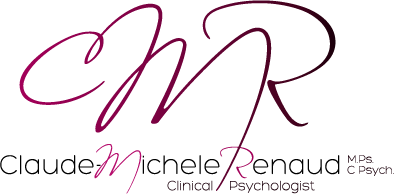Cognitive-Behavioral Therapy (CBT)
This therapy involves identifying any automatic negative thoughts which may have resulted in negative emotions, such as depression or anxiety. CBT helps the clients break down their overwhelming problems into smaller, more manageable components. Focusing on positive thoughts and emotions, instead of focusing on the causes of your distress in the past, enables you to modify your thoughts, emotions, and behaviour.
Mindfulness Cognitive Behavioral Therapy (MCBT)
Mindfulness-Based Cognitive Therapy (MBCT) is designed to help people who suffer repeated bouts of depression and chronic unhappiness. It combines the ideas of cognitive therapy with meditative practices and attitudes based on the cultivation of mindfulness. The heart of this work lies in becoming acquainted with the modes of mind that often characterize mood disorders while simultaneously learning to develop a new relationship to them. MBCT was developed by Zindel Segal, Mark Williams and John Teasdale, based on Jon Kabat-Zinn’s Mindfulness-Based Stress Reduction program.
Clinical Hypnosis
Clinical Hypnosis is the main technique Michele now uses to help clients access the wisdom of their subconscious in a focused way in order to foster healing.
What is hypnosis?
Simply speaking hypnosis is an altered state of consciousness. Clinical Hypnosis or Hypnotherapy, is the use of an altered state of consciousness, or trance, for therapeutic endpoint. This means that people are not treated with hypnosis but are treated in hypnosis.
Active imagination : Guided Imagery or Jungian Active Imagination is a process in Jungian psychology used to bridge the gap between the conscious and unconscious minds.
More on Hypnosis…
All hypnotic states are characterized by a tremendously pleasant state of relaxation. In this state individuals allow themselves to receive desired, beneficial suggestions that enter directly to the part of the subconscious mind. Under hypnosis, the conscious (rational) part of the brain is temporarily bypassed, making the subconscious part, which influences mental and physical functions, receptive to therapy. During the trance state there is heightened concentration for the specific purpose of maximizing potential, changing limiting beliefs and behaviors and gaining insight and wisdom.
Although hypnosis may be light, medium or deep, a medium trance is usually used during which metabolism, breathing and heartbeat are slowed and while the brain produces alpha waves. Normal states of consciousness i.e. sleeping, dreaming, being awake, can be detected in the wave patterns produced by the brain. The state of hypnosis differs from all three. The brain waves associated with quiet, receptive states are called alpha waves. In alpha states, the body gradually relaxes. Hypnosis, meditation, day dreaming, being absorbed in a book or music or television, driving and arriving at your destination without recalling all the usual landmarks and are good examples of alpha states.
The trance state is therefore a natural phenomenon. Clinical Hypnosis practiced by a trustworthy and professionally qualified therapist is completely safe.
Hypnosis can only be entered voluntarily, and you accept only the suggestions that you choose to accept. In clinical hypnosis, the therapist guides you into and out of the hypnotic state safely.
How does clinical hypnosis work?
The subconscious mind is the source of many of our problems and self-images. Our beliefs, habits and behaviours are stored as information. The subconscious is a tremendous reservoir of our unrecognized strengths and knowledge.
Hypnosis is a natural and effective technique for accessing the subconscious mind – the key to unleashing our potential, changing our unwanted habits and behaviours and finding solutions to our problems and concerns.
Hypnosis is an altered state of consciousness. In hypnosis, you are focused and concentrated while aware of your environment.
In the course of the therapy, clients are usually taught self-hypnosis as part of a number of therapeutic homework tasks.
Nobody can ever be hypnotized against their will and even when hypnotized, people still remain in complete control of any suggestions given.
The goal of clinical hypnosis is to take back control that has been lost and which has therefore resulted in the symptom or problem.
It is estimated that approximately 85% of people will readily respond to clinical hypnotherapy, practiced by a qualified and trained health professional.
Energy Psychology
Energy Psychology is a psychotherapeutic as well as a self-help approach that, as it is most commonly practiced, combines imaginal exposure and other cognitive methods with the stimulation of acupuncture points by tapping on them. The most well-known among its various formulations are Emotional Freedom Techniques (EFT) and Thought Field Therapy (TFT).
In fact, Energy psychology (EP) is a collection of mind-body approaches for understanding and improving human functioning. EP focuses on the relationship between thoughts, emotions, sensations, and behaviors, and known bioenergy systems (such as meridians and the biofield). These systems and processes exist, and interact, within individuals and between people. They are also influenced by cultural and environmental factors.
Within an EP framework, emotional and physical issues are seen, and treated, as bio-energetic patterns within a mind-body-energy system. The mind and body are thought to be interwoven and interactive within this mind-body-energy system, which involves complex communication involving neurobiological processes, innate electrophysiology, psychoneuroimmunology (PNI), consciousness, and cognitive-behavioral-emotional patterns.
The use of EP has resulted in the development of associated methods and models to treat psychological and emotional problems, facilitate health and wellbeing, and improve human performance. These models and methods are usually used within an integrative or holistic approach to practices such as psychotherapy, counseling, coaching, integrative medicine, and other healing modalities.
Applications of Energy Psychology
In the clinical world, EP models have been beneficially applied to assessment and treatment of trauma, anxiety, depression, pain, stress, psychophysiological issues, and self-sabotaging behaviors by a broad range of healthcare providers, to regulate affect and promote emotional and physical health.
Treatment results have been shown to be enduring and relatively rapid. There are currently over 84 research studies, including multiple randomized controlled trials (RCT) published in professional and refereed journals, confirming the treatment value of EP. Taken as a body of knowledge, these findings suggest that EP meets the criteria for evidenced-based treatment.
